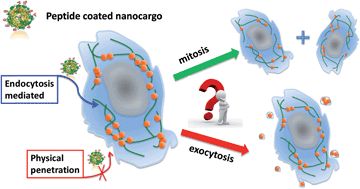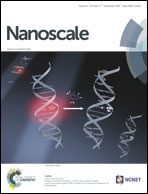Tempo-spatially resolved cellular dynamics of human immunodeficiency virus transacting activator of transcription (Tat) peptide-modified nanocargos in living cells†
Abstract
Understanding the cellular uptake mechanism and intracellular fate of nanocarriers in living cells is of great importance for the rational design of efficient drug delivery cargos as well as the development of robust biomedical diagnostic probes. In present study, with a dual wavelength view darkfield microscope (DWVD), the tempo-spatially resolved dynamics of Tat peptide-functionalized gold nanoparticles (TGNPs, with size similar to viruses) in living HeLa cells were extensively explored. It was found that energy-dependent endocytosis (both clathrin- and caveolae-mediated processes were involved) was the prevailing pathway for the cellular uptake of TGNPs. The time-correlated dynamic spatial distribution information revealed that TGNPs could not actively target the cell nuclei, which is contrary to previous observations based on fixed cell results. More importantly, the inheritance of TGNPs to the daughter cells through mitosis was found to be the major route to metabolize TGNPs by HeLa cells. These understandings on the cellular uptake mechanism and intracellular fate of nanocargos in living cells would provide deep insight on how to improve and controllably manipulate their translocation efficiency for targeted drug delivery.


 Please wait while we load your content...
Please wait while we load your content...